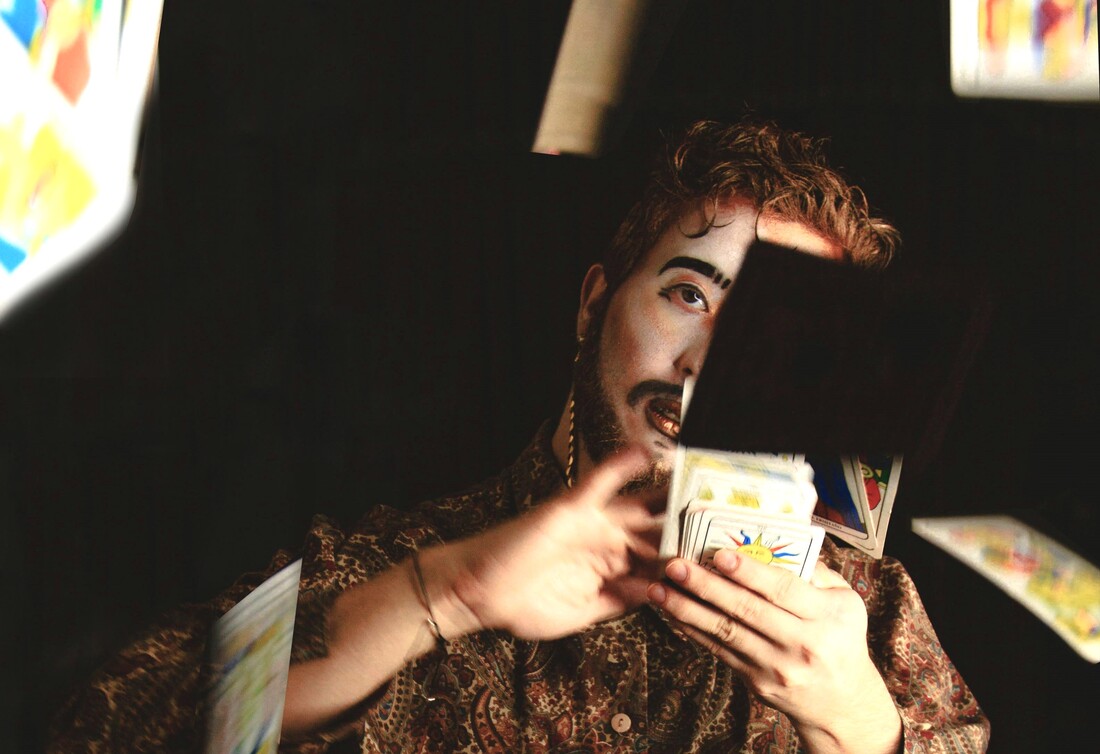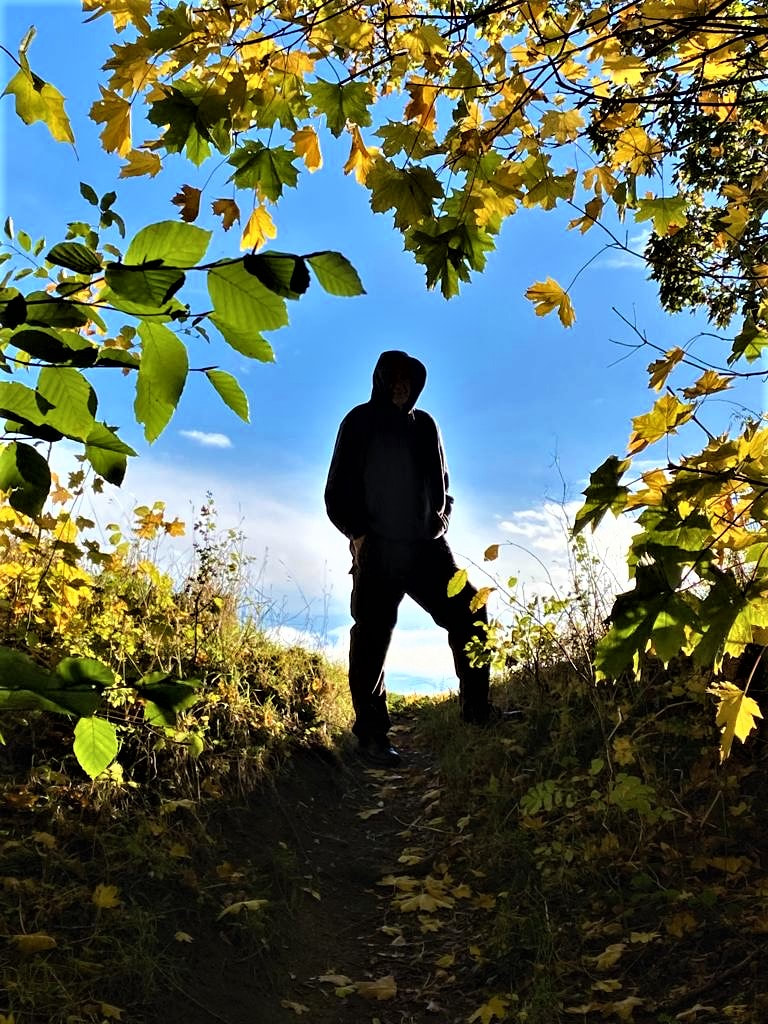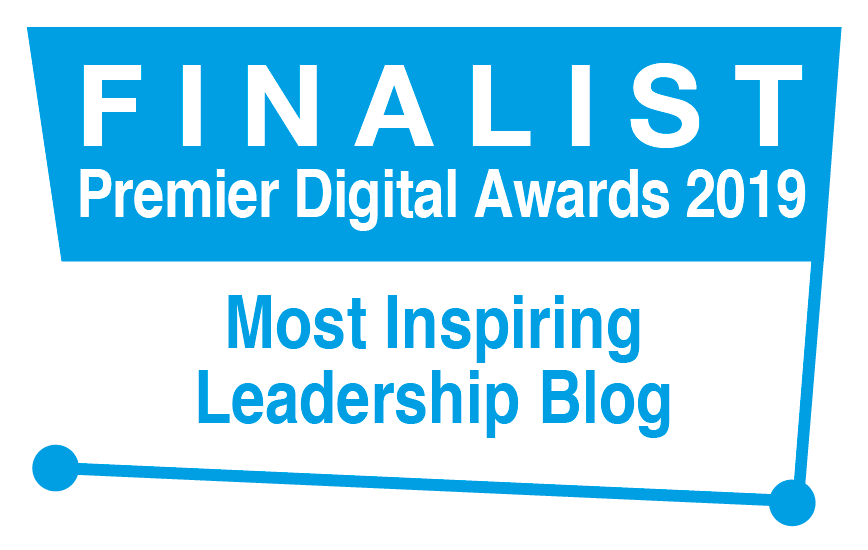|
‘Stop imagining. Experience the real. Taste and see.’ (Claudio Naranjo) Early predictions that electronic reading technologies would supersede the need for physical paper books proved unfounded. There’s something about holding a book, turning the pages, feeling the paper and smelling the ink that feels tangibly different to viewing text on screen. It’s something about reading as an experiential phenomenon that goes further and deeper than passively absorbing visual input. We’re physical beings and physical touch, movement and feeling still matter to us. I’ve noticed something similar in coaching conversations, stimulated by studies and experiments in the field of Gestalt. Against that backdrop, using physical props that invite physical interaction with those props can create shifts at psychological levels too. I have 4 different packs of cards available*, alongside other resources, and I notice that holding, sifting through and laying out cards can sometimes feel more engaging and stimulating for a client than thinking and talking alone. Each pack has a different purpose and focus. All involve inviting a client to flick through the cards to see which images, words, phrases or questions resonate for them here-and-now. It’s as if, at times, we’re able to recognise someone or something that matters to us, is meaningful for us, by touching and viewing it ‘out there’, rather than ‘in here’. The cards also enable a client, team or group to move or configure them in experimental combinations to see what insights, themes or ideas emerge. (*The Real Deal; Empowering Questions; Gallery of Emotions; Coaching Cards for Managers)
10 Comments
‘If you don’t appreciate your customers, someone else will.’ (Jason Langella) The restaurant came highly recommended and, as it was a special treat to eat out on this occasion, we had high hopes and expectations. The food was reasonable but the drinks were flat. We paid the bill and left, determined not to go there again. And therein lies one of the challenges for retailers in the UK. Many people are too polite to complain but they simply don’t return. ‘Was everything OK with the meal?’ ‘Yes, thank you.’ Big mistake. How about, ‘We hope you enjoyed your meal. In fact, we’ll give you a £5 discount off off your bill if you could suggest just 1 improvement for next time?’ That’s the way to do it. Take seriously the customer experience, elicit useful suggestions and increase the likelihood of a return. This resonates with what I heard at a Balanced Scorecards and Strategy Maps workshop. We were told that the CEO of supermarket giant Tesco doesn’t ask for reports on how many customers visit the stores, but how many come back. Repeat business. That’s the idea and it’s one of the purposes of loyalty cards: to see who returns. Remember too that just 1 unhappy customer can spread the news of a bad experience to other potential customers like wildfire. Last week felt like a perfect storm, an unexpected convergence of pressures from all directions that left me reeling. Betsy Kolkea describes it as like having the tail shot off a plane in mid-flight; a sudden loss of control that sets us spinning downward at terrifying speed. I’m reminded me of the dramatic plane-falling-from-the-sky scene in the film Knight & Day, where Cameron Diaz asks Tom Cruise anxiously, ‘Are we going down?’, to which he replies with a grin, ‘It’s just a rapid descent.’
In that satirical moment, the character played by Cruise actually models an important principle in a sudden crisis: create a pause, no matter how brief, to breathe, reflect, weigh up options (and, for me, pray) – then decide and act. I heard a similar idea in a video this week, about how to survive a parachute jump if the parachute doesn’t open. The most important thing is not to panic (yeah right!) and to use the moments available, no matter how brief, to breathe, focus, scan options and choose. This skill may indeed, of course, come a lot easier and more instinctively if we’ve had opportunity to practise and gain experience beforehand. There’s something about having already been through a challenge and survived, having been tested repeatedly under fire, that can develop a resilience and psychological adaptivity akin to muscle memory. It makes an auto-response possible in the midst of unexpected and extraordinary circumstances and, thereby, creates a vital moment-space to think. When have you gone into a tailspin? What have you done to recover from a surprise nosedive, a crisis that came from nowhere and hit you out of left field? What can you do to help others caught in free fall? Anita asked during a coach training workshop this week if it’s appropriate to address emotion in coaching. After all, isn’t that stepping too far into a person’s personal space or risking a drift into therapy? Curious, I asked which dimension of the issue she was feeling most concerned about. Anita replied that she felt anxious about straying into what could feel like a counselling relationship. If she did, she said, she would feel both out of her depth and as if she had breached a professional boundary. I paused, then asked if it had felt inappropriate when I posed that question to her, or if she had felt compromised in how she answered it. She looked up, smiled and said, ‘No.’
Another coaching workshop and Brian, a colleague, was introducing reflecting back as a core skill. One participant looked increasingly frustrated and eventually blurted out, ‘You call this a skill but it’s like playing a game with someone, using techniques on them rather than holding a real and respectful conversation.’ Brian listened then responded calmly, ‘So, reflecting back feels to you like toying with someone, and that clashes with your value for authenticity.’ 'Yes – that’s it exactly!’ he replied with a burst of positive energy that took everyone in the room by surprise. After a brief moment, he and everyone else broke out in fits of laughter. ‘OK, now I get it.’ The principle here is that of modelling an idea, an approach, a method or a technique, rather than simply describing or explaining it. There’s something about experiencing that can feel profoundly and qualitatively different to understanding a concept purely intellectually. This insight lays at the heart of Gestalt coaching and experiential learning. It’s primarily about doing, not thinking, and seeing what emerges into awareness when we do it. I worked with a leadership team that agreed a set of and behaviours to govern its practice. It looked neat on flipchart paper but its potential for transformation didn’t emerge until they grasped the nettle and practised it. What have been your best examples of learning by experience? How do you model this principle in your work with others? Take an issue (e.g. a painful memory, a foreboding experience) and hold it in your imagination for a moment. Now freeze the movie in your mind into a still shot. Tune down the colour until it’s black and white. Shrink the picture until it’s the size of a postage stamp. Cast the image away from you, as if into a distant bin. Now return to the present moment, the here-and-now. Notice the difference in how you are feeling. Allow the feeling to dissipate. Breathe.
Now, by contrast, imagine a positive experience, a great outcome, an exciting future. Hold the image in your mind. Tune up the colour until it’s vivid, radiant and bright. Turn up the sound until you can hear everything in crystal clarity. Really feel the positive energy and hope. Now turn the image into your favourite colour – a colour you associate with feeling happy, excited, relaxed. Hold the image, see the colour, feel the feeling. Now return to the here-and-now. Breathe. We hold memory and imagination as sensory experiences in the mind, body and emotions. Constructing, deconstructing and reconstructing experiences in this way through coaching or therapy can create profound shifts in what we notice, how we feel, how we behave and what we evoke. It can reduce pain from the past, present new solutions, engender fresh hope and enhance results. What’s your experience of using the imagination to influence change? I’m in this room, it’s the first time we’ve met and this man is explaining to me how he’s struggling in a key relationship. It’s a relationship between two organisations and this man, Simon, is the leader of one of them. The conversation runs for a while and Simon’s description of the relationship and what he’s experiencing from the other – what he describes as distance and defensiveness – sounds tough.
As he speaks, I become aware that the room we're in feels cold. It’s a sunny day and the aircon is turned up high. I glance around the room at the stark furniture. The tables and chairs are in perfect formation. Functional, straight lines. There’s nothing that suggests or reveals a human touch. No pictures, no plants, no photographs. This is the room where he meets with Sandra, leader of the other organisation. I comment on this, share this observation, then offer a reflection, an idea: ‘How far are you trying to find a cold, formal solution to an issue that is essentially about human relationship and trust?’ Simon looks stunned for a moment, then pauses, then goes quiet. I’m wondering how he will respond. Could this be a (proverbial) light bulb moment? Is there something about this room that holds the key? Then Simon speaks. ‘You know, I hadn’t realised it. We’ve built our relationship on formal lines – terms of reference, strategies, proposals – and we’ve never really taken the time to get to know and understand each other as people.’ A penny has dropped. I can see it in his eyes. I respond: ‘Do you know what you need to do?’ Simon nods and jots down a note. The meeting is finished. It lasts 10 minutes. I was co-facilitating a coach training workshop for leaders last week. Sun was streaming in through the windows and I was thinking about how to illustrate the concept of psychological filters and distortions. At that very second, I looked up and saw this perfect image. A real Plato’s Cave moment. Pointing to the window blind, I asked participants to imagine what the window frame is like behind it, based purely on what they could see. ‘Curved, bent, twisted, grey?’
In my experience as a psychological coach, this can be a most important and valuable insight. We continuously filter experiences so that what we perceive and what meaning we attribute to it is influenced as much by what is happening within us as anything that is taking place externally to us in the room. I’ll introduce four types of filter or influence in these notes below, along with a brief explanation for each: projection, transference, culture and emotion. You may have heard the expression, ‘We don’t see things as they are, we see them as we are.’ This idea of projection is a simple and complex one. Watts illustrates it like this: imagine a projector on your shoulder, projecting an image onto a person standing in front of you. What you see is a combination of what they actually look like with an overlay of aspects of the projected image. This distorts what we perceive so that we partly relate to the person as they are, and partly as we are. The principle here is that we subconsciously project aspects of ourselves onto those we encounter. At a functional level, it helps us to identify and empathise with people. It’s as if we recognise something of ourselves in them. However, we also project aspects of ourselves onto others that we don’t acknowledge or recognise in ourselves. Perhaps I’m not aware of how compassionate I am but see it in others around me. Perhaps what I find annoying in others is a denied aspect of me too. Our perceptions are also influenced by our past. It’s as if we filter all new experiences through what we have experienced previously and what conscious (rational) or subconscious (intuitive) conclusions we have drawn from it. Human Givens therapists talk about this as pattern matching. If we encounter someone or something that reminds us of a previous person or event, it may re-trigger that previous experience so that we experience the new event along with the past. I see this happen a lot in coaching conversations. Clients may react to experiences in the present as if they are unknowingly re-living similar experiences from the past and transferring something of those experiences onto how they are interpreting the present. This kind of resonance can create an amplifying effect, causing the person to overreact to a person or issue in the here and now. Surfacing the pattern, the transference, can be releasing and create a new sense of perspective. What and how we perceive someone or something in a situation is also influenced by our cultural beliefs and values. It’s as if there is a permeable boundary between ourselves and others so that what we experience is us - but not only us. Cognitive behavioural research shows how what we feel in any given situation is influenced profoundly by what we believe about that situation. In this sense, our culture acts as a filter, influencing what we notice, or not, and what sense we make of it. Finally, our perceptions are influenced by our physical and emotional state in the moment. If a person is feeling highly stressed, for instance, they may shift into fight/flight/freeze mode which significantly affects their cognitive abilities. He or she may experience a whole range of cognitive distortions that nevertheless appear to them, in that moment, as reality. I’ve written more about this in a short article: Fresh Thinking. Perhaps the most significant point here is that for most of us most of the time, we are unaware of the filters we hold. We continually create and recreate our perceived realities. When we look at the window blind, we may assume we are looking at the window. We believe that what we perceive is what is. As far as we know, the window frame is curved, bent, twisted and grey – that is, assuming we know or believe there is a separate reality, a window frame, beyond the blind. As leaders, coaches and facilitators, we can grow in awareness of our own filters and their potentially distorting effects. We can learn to notice when we are projecting or transferring onto people and experiences. We can grow in awareness of our cultural beliefs and how they shape what we perceive and what we value. We can grow in awareness of our emotional states – what triggers them and how to handle them in the moment. We can enable others to grow in awareness too, thereby broadening the range of possibilities, of options, available to them – and to us. I would be interested to hear whether anything I’ve described here resonates with your own experiences. Notice what the photo, my language, my way of presenting ideas evokes in you. How do you feel as you read this? What does it remind you of? What are you noticing and not noticing, including within and about yourself? I look forward to hearing from you! Picture this. Here I am in a church meeting when a woman sitting in front of me starts to shake physically. This was in the context of a meeting where expectations were high that God would do something dramatic. The people around this woman prayed enthusiastically and the physical shakes were interpreted as a visible and positive sign of God’s activity.
I later spoke to a nurse and asked how the same phenomenon would be interpreted in, say, an Accident & Emergency unit at the local hospital. ‘Possibly as some kind of neurological disturbance’, she replied. I then asked how medical staff were likely to respond if they observed this happening. ‘They would probably conduct tests to understand and treat the underlying physical cause.’ This intrigued me. It’s as if the interpretation we apply to an experience depends partly on the socio-physical environment in which the phenomenon arises (in this example, a church or hospital) and what the prevailing expectations and interpretations are in that context. It also depends on our own personal belief systems and the broader cultural worldview that we inhabit. This raises interesting questions about which, if either, interpretation is ‘correct’. Someone of a particular religious conviction may argue strongly for a spiritual interpretation whereas someone of a secular-medical outlook may argue equally strongly for a medical interpretation. It sets up the risk of a false dichotomy, as if different interpretations are necessarily mutually exclusive. One way to look at this is that events and experiences have no inherent meaning of their own. They just are what they are. What happens simply…happens. As individuals and social groups (e.g. cultures, professions), we construct meaning based on what we believe and hold to be true. In other words, we apply meaning to events and experiences rather than derive meaning from them. A non-medical church member may look at the experience through a spiritual lens; a secular medical practitioner through a scientific lens. As a consequence, they each notice, don’t notice, include and conclude something different. Each lens creates and reinforces its own meaning, superimposes its own meaning, and, having done so, appears obvious or self-evident for those share that view. It seems possible to me that the same phenomenon can carry more than one meaning. In the example above, it’s possible (assuming, as I do, that God exists) that God may act in a person’s life by creating a neurological disturbance that may, say, reveal some hidden issue psychosomatically or symbolically that is important for that person or cultural community to pay attention to. Having said that, there may be different explanations altogether to those offered above that could explain this experience. They may not be obvious to us because they don’t fit with our current frames of reference or lenses and are, therefore, in effect, invisible to us. It’s a bit like asking a colour-blind person to describe coloured images or shapes on a card that lie outside their ability to perceive. So what is the significance for leadership, coaching and facilitation? I think it’s something about being aware, as far as we can be, of our own personal and cultural influences, the effect they have on, say, who and what we notice and don’t notice, who and what we value and don’t value and the impact we have on others. It’s about being willing to engage in the existential struggle that holding core assumptions lightly whilst taking a stance with conviction entails. It’s about using our work to help others – whether individuals, teams or organisations – grow in awareness of their personal and cultural beliefs, values and assumptions so they can explore new possibilities constructively and creatively. It’s about modelling and nurturing curiosity, integrity and hope. I live in a small rural community in central England. Until a couple of years ago, it was a tranquil, peaceful area. Then the local farmer introduced gas gun bird scarers, hoping to protect his crops. If you haven’t heard these guns, they emit a very loud bang every few minutes. It now feels like living next door to a live artillery range. Imagine a grenade exploding outside your front window every 2 minutes. From dawn until dusk. Day in, day out. Week in, week out. Month in, month out.
I struggle to find words to express how stressful and exhausting this experience is. As time goes by, I range from anger to frustration to despair. The sheer relentlessness of it tests my Christian values to the limit. I’ve written so many letters in my head and yet, thankfully, managed to avoid sending them. I’ve explained how I’m feeling and asked the farmer, politely, to consider alternative methods available that are not so intrusive. No response. The loud blasts continue. No end in sight. And now imagine the farmer’s experience. Struggling to make a living, growing and selling his crops in an increasingly competitive market. Climate change making things worse, alternating between drought and floods. Birds wreaking havoc, or so it seems to him, on the crops. Every loud bang brings a feeling of comfort, an expectation of birds dispersed, hope for a good crop this year. The guns make him feel safer, better protected, more able to deal with the challenges he faces. This begs questions such as whether the gas guns actually have what the farmer considers to be the desired effect (because increasing evidence shows they are ineffective or even, over time, attract birds) and whether a better win-win solution could be found. However, the striking aspect I want to focus on here is how two parties are able to experience and respond to what is, on the face of it, the same phenomenon, in this case loud bangs throughout the day, so very differently. Bolman & Deal explored this phenomenon in 1991 and commented that, ‘What’s important is not what happens but what it means’, that is, that every event carries with it potential psycho-symbolic significance. This resonates with Ellis’ earlier observations (the basis for his rational emotive therapy, forerunner of cognitive behavioural therapy) that what we feel tends to be governed more by what we believe about an event, what associations it holds for us, than the fact of the event itself. There are important implications for coaching and organisation development, as there are in therapy. When working with individuals, groups and organisations, we need to pay attention to what is happening in the client’s world and what meaning, what significance, it holds for them. Imagine, for instance, a change initiative at personal, team or organisational level. What, subjectively, will the change mean to the client? What hopes and fears and implications does it evoke for them? The client’s meaning-making is likely to be influenced psycho-dynamically (i.e. how it resonates with their previous experiences) and culturally (i.e. how their cultural group – e.g. team, sector or wider community - makes sense of these experiences, including what value judgements it places against them). It means that where leaders seek to introduce proposals, solutions or resolutions, they need to take careful account of different stakeholder values, goals, perspectives and experiences. How would you describe your coaching style? What questions would you bring to a client situation?
In my experience, it depends on a whole range of factors including the client, the relationship, the situation and what beliefs and expertise I, as coach, may hold. It also depends on what frame of reference or approach I and the client believe could be most beneficial. Some coaches are committed to a specific theory, philosophy or approach. Others are more fluid or eclectic. Take, for instance, a leader in a Christian organisation struggling with issues in her team. The coach could help the leader explore and address the situation drawing on any number of perspectives or methods. Although not mutually exclusive, each has its own focus and emphasis. The content and boundaries will reflect what the client and coach believe may be significant: Appreciative/solutions-focused: e.g. ‘What would an ideal team look and feel like for you?’, ‘When has this team been at its best?’, ‘What made the greatest positive difference at the time?’, ‘What opportunity does this situation represent?’, ‘On a scale of 1-10, how well is this team meeting your and other team members’ expectations?’, ‘What would it take to move it up a notch?’ Psychodynamic/cognitive-behavioural: e.g. ‘What picture comes to mind when you imagine the team?’, ‘What might a detached observer notice about the team?’, ‘How does this struggle feel for you?’, ‘When have you felt like that in the past?’, ‘What do you do when you feel that way?’, ‘What could your own behaviour be evoking in the team?’, ‘What could you do differently?’ Gestalt/systemic: e.g. ‘What is holding your attention in this situation?’ ‘What are you not noticing?’, ‘What are you inferring from people’s behaviour in the team?’, ‘What underlying needs are team members trying to fulfil by behaving this way?’, ‘What is this team situation telling you about wider issues in the organization?’, ‘What resources could you draw on to support you?’ Spiritual/existential: e.g. ‘How is this situation affecting your sense of calling as a leader?’, ‘What has God taught you in the past that could help you deal with this situation?’, ‘What resonances do you see between your leadership struggle and that experienced by people in the Bible?’, ‘What ways of dealing with this would feel most congruent with your beliefs and values?’ An important principle I’ve learned is to explore options and to contract with the client. ‘These are some of the ways in which we could approach this issue. What might work best for you?’ This enables the client to retain appropriate choice and control whilst, at the same time, introduces possibilities, opportunities and potential new experiences that could prove transformational. |
Nick WrightI'm a psychological coach, trainer and OD consultant. Curious to discover how can I help you? Get in touch! Like what you read? Simply enter your email address below to receive regular blog updates!
|








 RSS Feed
RSS Feed